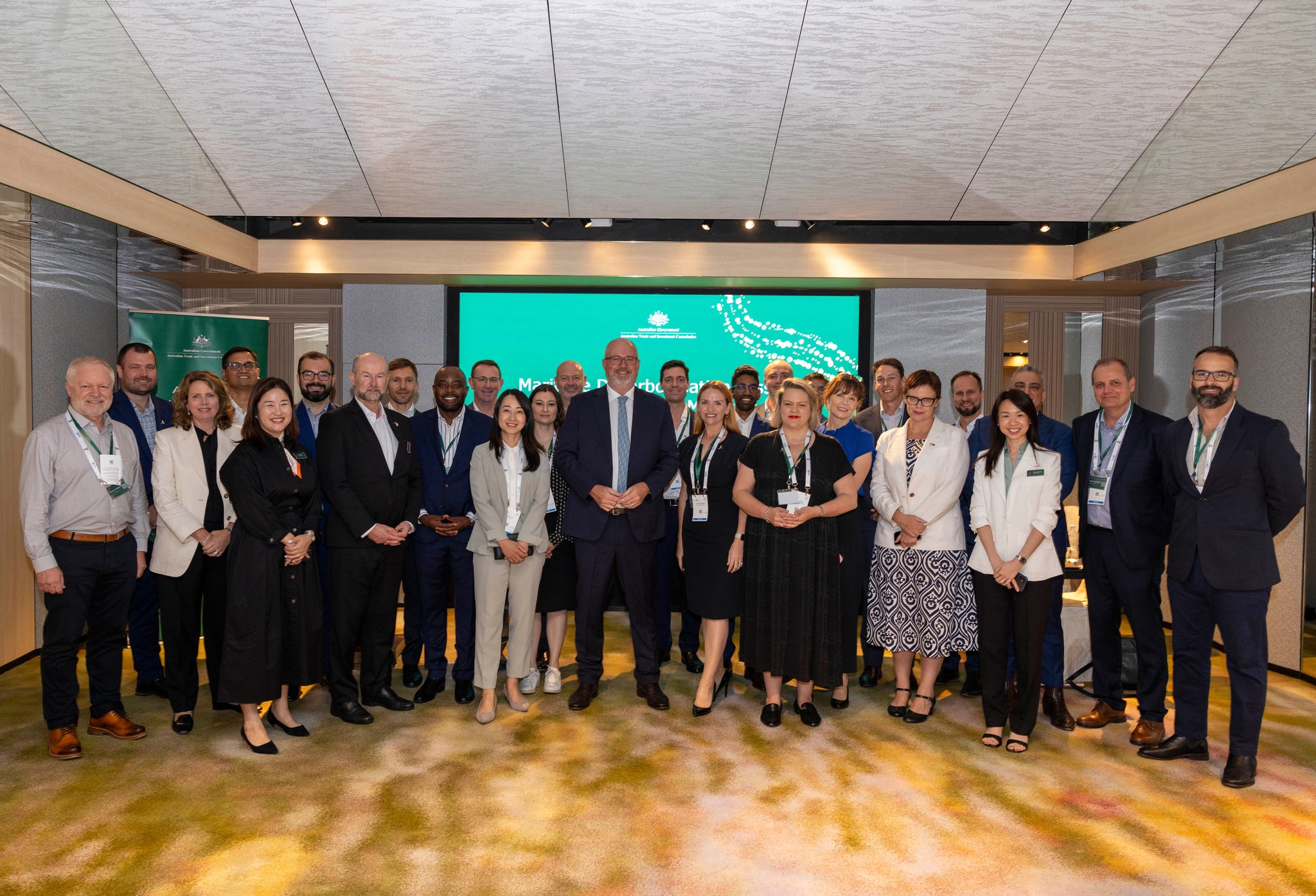Australia and Southeast Asia partner on decarbonisation in the maritime industry
Austrade’s first Southeast Asia Business Exchange mission focused on decarbonisation in the maritime industry.
Australian businesses had a first-hand look at Southeast Asia’s maritime industry on the first Australia Southeast Asia Business Exchange mission to Singapore and Malaysia.
Led by Assistant Minister for Trade, Senator the Hon Tim Ayres, the inaugural mission focused on green energy transition in the maritime industry. The mission comprised 22 Australian companies, research institutions, and industry organisations across the maritime supply chain.
The United Nations estimates the global maritime industry will spend billions of dollars every year on decarbonisation over the next decade. Malaysia is targeting 40% low-carbon fuel penetration for marine transport by 2050. Singapore is aiming for full electric propulsion and net zero fuels for its harbour craft fleet in the same timeline.
These decarbonisation goals open opportunities for Australian organisations that offer green solutions for the maritime industry. The mission generated strong interest from Singaporean and Malaysian ports and investors. They were particularly interested in fuel supply (ammonia and methanol) and electrification solutions.

Assistant Minister for Trade, Senator the Hon Tim Ayres (centre), leads the first Australia Southeast Asia Business Exchange mission to Singapore and Malaysia.
First-hand insights and in-depth discussions
Austrade organised a comprehensive program that provided Australian delegates with insights into innovative practices and emerging opportunities. Discussions centred on fuel, vessel and port-side technology.
Support from large corporates including Fortescue, BHP, Rio Tinto and Toll Group provided access and insights that benefitted the whole delegation.
Among the highlights was a visit to Fortescue’s Green Pioneer ship in the Port of Singapore. In a world first, the vessel successfully trialled the use of liquid ammonia and diesel as a marine fuel.
In Malaysia, delegates visited the Port of Tanjong Pelepas. The Port is ranked one of the world’s top 15 major ports. It can serve mega container vessels and Ultra Large Crude Vessels in its wide access channel. Both ports are major hubs in the region’s maritime landscape.
Sixty senior executives from Singapore and Malaysia across government and industry convened for 3 roundtable sessions. The discussions explored the investments and technologies needed for sustainable value chain development in line with the International Maritime Organisation’s decarbonisation goals. The delegates attended meetings and networking events with industry leaders organised by Austrade.
Australian companies had the chance to showcase their green technologies and services for the maritime industry. These included hydrogen and ammonia production; hydrogen storage, green and renewable methanol production; electrification, battery and solar power; containerisation innovation; logistics; civil engineering; and more.
‘The market briefings, roundtable discussions and site visits provided insights into regional demand for maritime decarbonisation solutions,’ says Kirstyn Thomson, Senior Trade and Investment Commissioner, Austrade Singapore.
‘The energy transition will be a defining factor of the Australia-Singapore, and Australia-Malaysia, relationships for the next decade. This opportunity to bring business and policymakers together to discuss practical issues and solutions was timely.
'There are strong opportunities for Australian-based businesses. Austrade and Australian companies are focused on developing business relationships with partners in Singapore and Malaysia.’
Growing business between Australia and Southeast Asia
The maritime decarbonisation mission is part of the Australian Government’s Southeast Asia Business Exchange program. The program aims to increase two-way trade and investment between Australia and Southeast Asia.
Southeast Asia’s expanding economy and growing middle class make the region a top export destination. Australian business can also tap into the region’s advanced manufacturing and tech sectors to diversify their supply chains.
Sign up to receive the latest news and insights about Southeast Asia.
Go further, faster with Austrade
Austrade’s Go Global Toolkit helps you learn the export basics, find the right markets and understand market requirements.